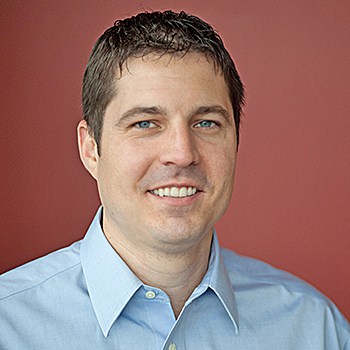Location
Chemical Engineering
Biomedical Engineering
B-28 NCRC
G056W2800 Plymouth Road, Ann Arbor, MI 48109-2800
Phone
Primary Website
Education
Massachusetts Institute of Technology
PhD CHE ’08
Pennsylvania State University
BS Chemical Engineering, Minor in Biochemistry & Molecular Biology ’03
Experience
Positions Held at U-M
Associate Professor, Department of Chemical Engineering (2019-present)
Assistant Professor, Department of Chemical Engineering (2012-2019)
Positions Held Elsewhere
Junior Faculty, Harvard Medical School/Massachusetts General Hospital, Radiology (2011-2012)
Postdoctoral Research Fellow, Harvard Medical School/Massachusetts General Hospital, Center for Systems Biology (2008-2011)
Research Interests
Molecular Imaging Agent Design – Significant advances have been made in understanding the molecular basis of many diseases including cancer, cardiovascular disease, autoimmune disorders, Alzheimer’s disease, and numerous others. Molecular imaging agents have the potential to translate this knowledge into making earlier and more accurate diagnoses and better monitoring of treatment outcomes. The broad research goal of the lab is to understand the transient distribution of imaging agents based on molecular properties (such as size, target affinity, lipophilicity, plasma clearance, etc.) in order to efficiently generate novel compounds. A mechanistic understanding of distribution also enables predictive scaling from animal models to the clinic for more efficient translation. Towards this goal, the lab uses a joint theoretical and experimental approach, applying fundamental chemical engineering principles, to utilize models while developing new imaging agents and measuring their properties and distribution.
Quantitative Pharmacology – Therapeutic molecules must reach their intended target for efficacy in disease treatment. Mathematical models developed for imaging agents also apply to therapeutic distribution, often delivered in a pseudo-steady state fashion (such as repeated oral dosing). Using sophisticated in vivo microscopy techniques and multi-scale mathematical modeling, the distribution of therapeutics is investigated from the organ level down to the tissue, cellular, and subcellular length scale. The results can be paired with pharmacodynamic studies to maximize therapeutic efficacy. Mathematical models developed from these experimental studies will become increasingly important as the distinction between small molecule drugs and macromolecule biologics decreases for many new therapeutics with novel properties.
Courses Taught
ChE 230 – Introduction to Material Energy Balances
ChE 344: Reaction Engineering and Design
ChE 574: Drug Delivery and Targeting
ChE 696: Principles and Predictions of Drug Distribution
Awards
- National Science Foundation CAREER Award, 2016
- NIH Research Scientist Career Development Award (K01 Mechanism), 2011
- Harvard Medical School NIH T32 Training Grant in Molecular Imaging, 2008-2011
- Sigma Xi Scientific Research Society, Full Membership, 2008
- Ludwig Fellowship in Cancer Research, MIT, 2006
- Presidential Fellow, MIT, 2003
- Chemical Engineering Student Marshall, Pennsylvania State University, 2003
- 1st place AIChE Regional Conference Paper Competition, 2003
